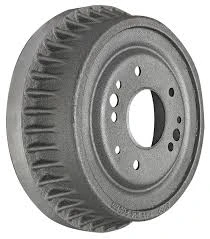
-
 Afrikaans
Afrikaans -
 Albanian
Albanian -
 Amharic
Amharic -
 Arabic
Arabic -
 Armenian
Armenian -
 Azerbaijani
Azerbaijani -
 Basque
Basque -
 Belarusian
Belarusian -
 Bengali
Bengali -
 Bosnian
Bosnian -
 Bulgarian
Bulgarian -
 Catalan
Catalan -
 Cebuano
Cebuano -
 Corsican
Corsican -
 Croatian
Croatian -
 Czech
Czech -
 Danish
Danish -
 Dutch
Dutch -
 English
English -
 Esperanto
Esperanto -
 Estonian
Estonian -
 Finnish
Finnish -
 French
French -
 Frisian
Frisian -
 Galician
Galician -
 Georgian
Georgian -
 German
German -
 Greek
Greek -
 Gujarati
Gujarati -
 Haitian Creole
Haitian Creole -
 hausa
hausa -
 hawaiian
hawaiian -
 Hebrew
Hebrew -
 Hindi
Hindi -
 Miao
Miao -
 Hungarian
Hungarian -
 Icelandic
Icelandic -
 igbo
igbo -
 Indonesian
Indonesian -
 irish
irish -
 Italian
Italian -
 Japanese
Japanese -
 Javanese
Javanese -
 Kannada
Kannada -
 kazakh
kazakh -
 Khmer
Khmer -
 Rwandese
Rwandese -
 Korean
Korean -
 Kurdish
Kurdish -
 Kyrgyz
Kyrgyz -
 Lao
Lao -
 Latin
Latin -
 Latvian
Latvian -
 Lithuanian
Lithuanian -
 Luxembourgish
Luxembourgish -
 Macedonian
Macedonian -
 Malgashi
Malgashi -
 Malay
Malay -
 Malayalam
Malayalam -
 Maltese
Maltese -
 Maori
Maori -
 Marathi
Marathi -
 Mongolian
Mongolian -
 Myanmar
Myanmar -
 Nepali
Nepali -
 Norwegian
Norwegian -
 Norwegian
Norwegian -
 Occitan
Occitan -
 Pashto
Pashto -
 Persian
Persian -
 Polish
Polish -
 Portuguese
Portuguese -
 Punjabi
Punjabi -
 Romanian
Romanian -
 Russian
Russian -
 Samoan
Samoan -
 Scottish Gaelic
Scottish Gaelic -
 Serbian
Serbian -
 Sesotho
Sesotho -
 Shona
Shona -
 Sindhi
Sindhi -
 Sinhala
Sinhala -
 Slovak
Slovak -
 Slovenian
Slovenian -
 Somali
Somali -
 Spanish
Spanish -
 Sundanese
Sundanese -
 Swahili
Swahili -
 Swedish
Swedish -
 Tagalog
Tagalog -
 Tajik
Tajik -
 Tamil
Tamil -
 Tatar
Tatar -
 Telugu
Telugu -
 Thai
Thai -
 Turkish
Turkish -
 Turkmen
Turkmen -
 Ukrainian
Ukrainian -
 Urdu
Urdu -
 Uighur
Uighur -
 Uzbek
Uzbek -
 Vietnamese
Vietnamese -
 Welsh
Welsh -
 Bantu
Bantu -
 Yiddish
Yiddish -
 Yoruba
Yoruba -
 Zulu
Zulu
what are the 2 types of drum brakes
Understanding the Two Types of Drum Brakes
Drum brakes are essential components of many vehicles, crucial for providing effective braking power and safety. They operate on the principle that friction is created when brake shoes press against the inside surface of a rotating drum. While this type of braking system can be found in various applications, it is commonly used in the rear braking systems of cars, trucks, and trailers. There are primarily two types of drum brakes leading-trailing shoe drum brakes and duo-servo drum brakes. Understanding these types can help in appreciating their functionality and efficiency in vehicle braking systems.
Leading-Trailing Shoe Drum Brakes
The leading-trailing shoe drum brake is one of the most common designs found in vehicles today. This system includes two brake shoes a leading shoe and a trailing shoe. The leading shoe is the one that rotates in the direction of the wheel's rotation, while the trailing shoe moves opposite to it. When the brakes are applied, the leading shoe experiences a greater force due to the rotational motion of the drum, which enhances braking performance.
One of the advantages of the leading-trailing design is its simplicity and cost-effectiveness. It typically requires fewer components compared to other drum brake systems, making it easier to manufacture and maintain. This type of brake is commonly used in light-duty vehicles due to its sufficient stopping power and reliable performance under various driving conditions. However, while effective for everyday use, lead-trailing systems may not provide the same level of performance as more advanced braking systems, especially during emergency stops or heavy loads.
what are the 2 types of drum brakes

Duo-Servo Drum Brakes
Duo-servo drum brakes represent a more advanced design and are often utilized in heavier vehicles such as trucks and larger SUVs. This system features a unique arrangement where both brake shoes work in a 'servo' action, meaning that when the brakes are applied, one shoe causes the other to expand against the drum. The design takes advantage of the braking force generated by the rotation of the drum, which helps to increase the frictional force experienced by the brake shoes.
The primary benefit of duo-servo drum brakes is their enhanced stopping power and improved efficiency. Because both shoes work together, the system can generate more braking force with less effort. This is particularly advantageous in situations where maximum stopping distance is critical, such as when towing trailers or carrying heavy loads. Duo-servo systems are also less prone to brake fade, a phenomenon where brake performance diminishes due to overheating, making them a reliable choice for demanding driving conditions.
Conclusion
Both leading-trailing and duo-servo drum brakes have their own sets of advantages and disadvantages, catering to different vehicle demands and driving conditions. Leading-trailing shoe drum brakes are well-suited for lighter vehicles and everyday driving, while duo-servo drum brakes offer superior braking performance for heavier vehicles and more intense braking scenarios. Understanding these two types of drum brakes can help vehicle owners make informed decisions regarding maintenance and upgrades, leading to enhanced safety and performance on the road. As automotive technology continues to evolve, it will be interesting to see how these traditional systems adapt and integrate with newer braking technologies for increased efficiency and safety.
-
What Are Drum BrakesNewsJul.07,2025
-
Understanding Brake Drum MaterialNewsJul.07,2025
-
Semi-Trailer Brake Drum: A Key Component for Extreme Loads and Long-Distance TransportNewsJul.07,2025
-
Drum Brake Pads for SaleNewsJul.07,2025
-
Brake Drums for SaleNewsJul.07,2025
-
Brake Drum ManufacturerNewsJul.07,2025
-
Aluminum Brake Drums: The Future of High-Performance CarsNewsJul.07,2025
